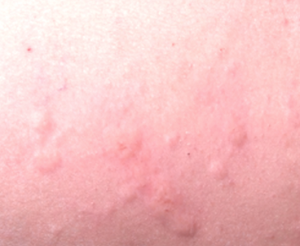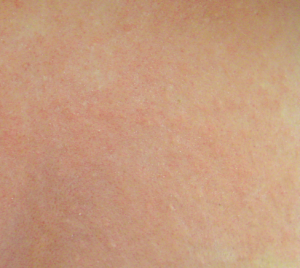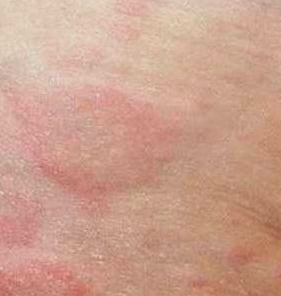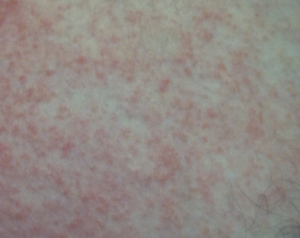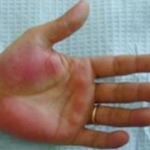More than one tenth of the American population suffers from Hay fever, of which the rash is a common symptom. Hay fever is also known as allergic rhinitis used to denote symptoms of cold. The fever affects people differently. For some the fever could be seasonal and for others it’s seasonal. So is the case with the hay fever rash.
Hay fever rash is a common symptom of the fever just like sneezing, watery eyes, and trouble in breathing, all a result of reactions to airborne particles. Skin irritation however gets lesser attention as compared to other symptoms. The rash can occur due to the direct contact of the skin with the allergens such as pollens in plants and flowers. This is common for the ones working in the fields or yards. Sometimes a rash is also mistaken for hives that is caused by internal reactions, i.e. an allergen that has possible been ingested or breathed. But hives can still occur due to hay fever. Red patches and itchiness or eruptions on the skin are the first few and foremost symptoms. Unlike rashes hives look like welts than bumps, with clearly defined edges. They also turn white if pressed and can increase in size with time.
Causes
When the immune system creates antibodies against certain substances it causes the hay fever as the immune system might mistake a particular airborne particle as harmful for the body and in the process makes antibodies to protect the body. When the body comes in contact with the similar substances again the antibodies that have been formed are able to detect it and further pass the information to the immune system. The immune system then produces chemicals like histamine and passes it on to the bloodstream for dealing with the invasion. These chemical reactions result in various symptoms of the fever such as the rash.
Pollens are the seasonal triggers that cause the fever, for instance Grass and tree pollen, especially during summer and spring season. It can also be caused in warm and humid weather because of Mold and fungi spores. During fall season the Ragweed pollen also triggers the Hay fever. Cockroaches, dust mites, direct contact with Animal’s skin can also be a cause.
Hay fever rash can occur because of the following:
The direct contact of skin with allergens like pollen can cause rashes as well as hives as a result of the allergic reaction. A typical hay fever rash is characterized by red colored patches on the skin. They can also look like bumps or welts. The borders of the rashes are often clearly defined and also have swelling, itchiness and pain. The rashes can become bigger with time and might reappear in some time.
There are also severe cases such as atopic dermatitis rash in hay fever. The rashes that are usually bumpy and dry are accompanied by abscess, blisters that ooze, and rashes that can bleed and cause severe itchiness. The rashes mostly occur on typical areas such as the hands, scalp, feet, and in some cases the face. The allergic reaction can also cause other types of hay fever rash like Heat rashes and poison ivy rashes. Coming in contact with everyday materials such as soaps and detergents may worsen the hay fever rash.
Some risk factors involved in causing hay fever rash are as follows:
- Vulnerability to skin disorders or a family history of allergies.
- Personal medical history of asthma or allergies
- An environment that increases the continuous exposure to allergens.
Treatment
The best treatment is ensuring the avoidance of contact with the trigger of allergic reaction. Being this careful isn’t always possible but one can always try. In the mild cases of hay fever rash OTC medications can be taken to treat it but if this happens in case of children then it’s better to consult a doctor for treatment. It can help in avoiding further complications and side effects of medicines.
On the other hand the severe cases of hay fever rash can be are treated with medications like Antihistamines. It can either be taken orally in the form of pills, or sprays. It also helps in treating the other fever symptoms such as cold, sneezing, irritation, and itchiness. Some other treatment options include allergy shots and skin coolants. Even though avoiding contact with pollens or allergens will act as a preventive measure but it isn’t really a feasible option.
Some home remedies to cope up with the rash are:
- Keeping the affected area cool.
- You can also use Clay poultices, such as bentonite clay
- Another effective ingredient is Oatmeal that can ease the skin rashes due to its anti-inflammatory properties. You can make a paste by adding some water in uncooked oatmeal and apply it directly to the skin.
- Fresh Aloe vera gel, peppermint leaves or basil leaves can be applied directly to the skin.
Hay Fever Rash – Pictures
